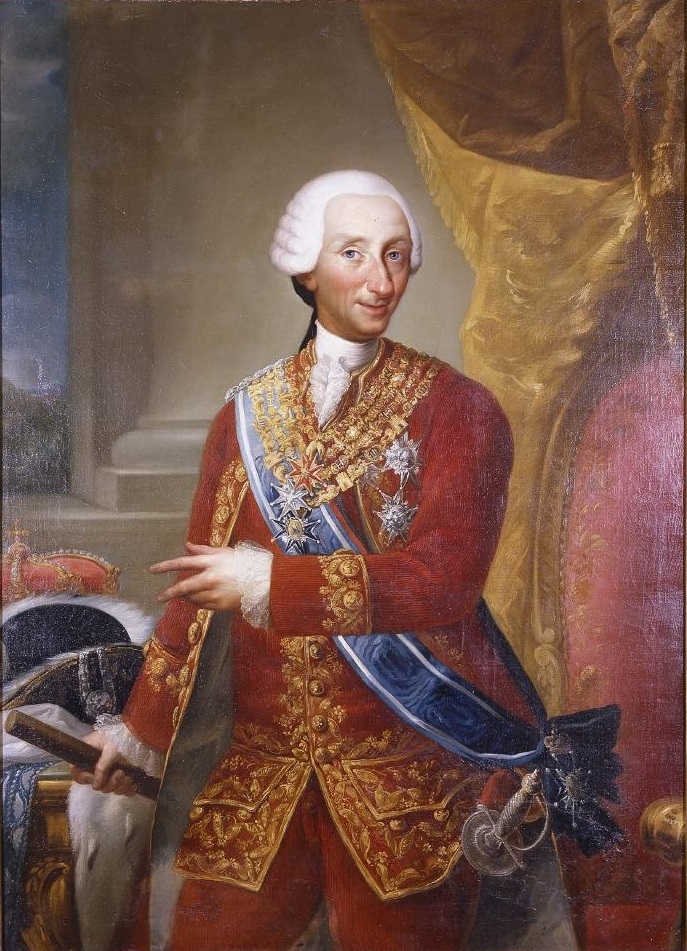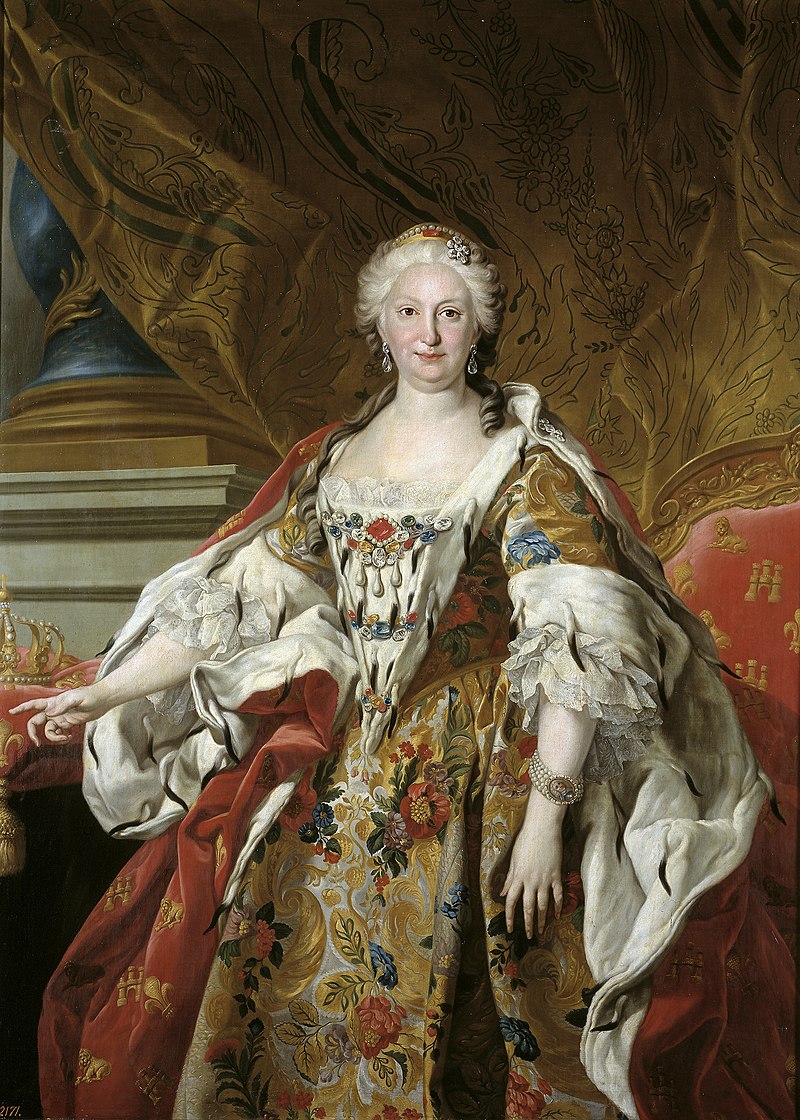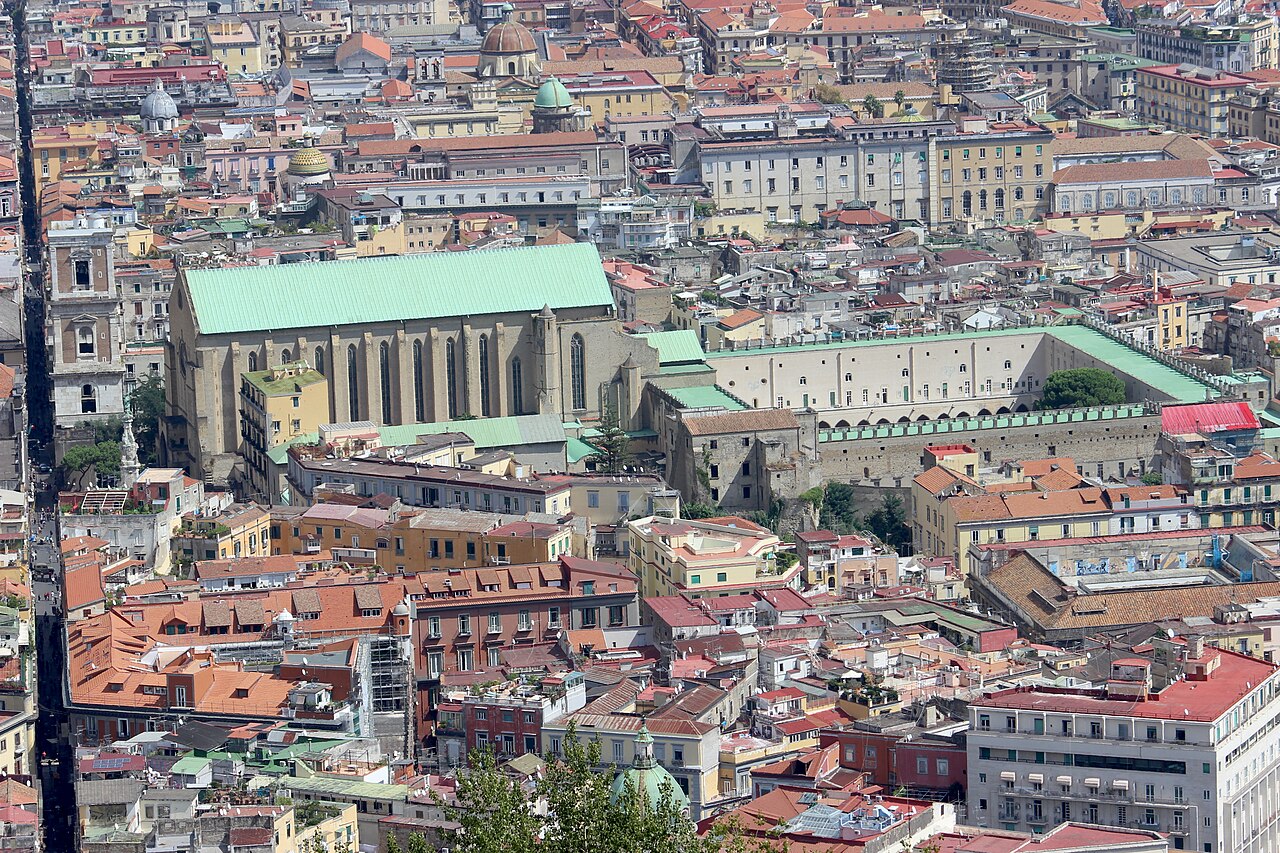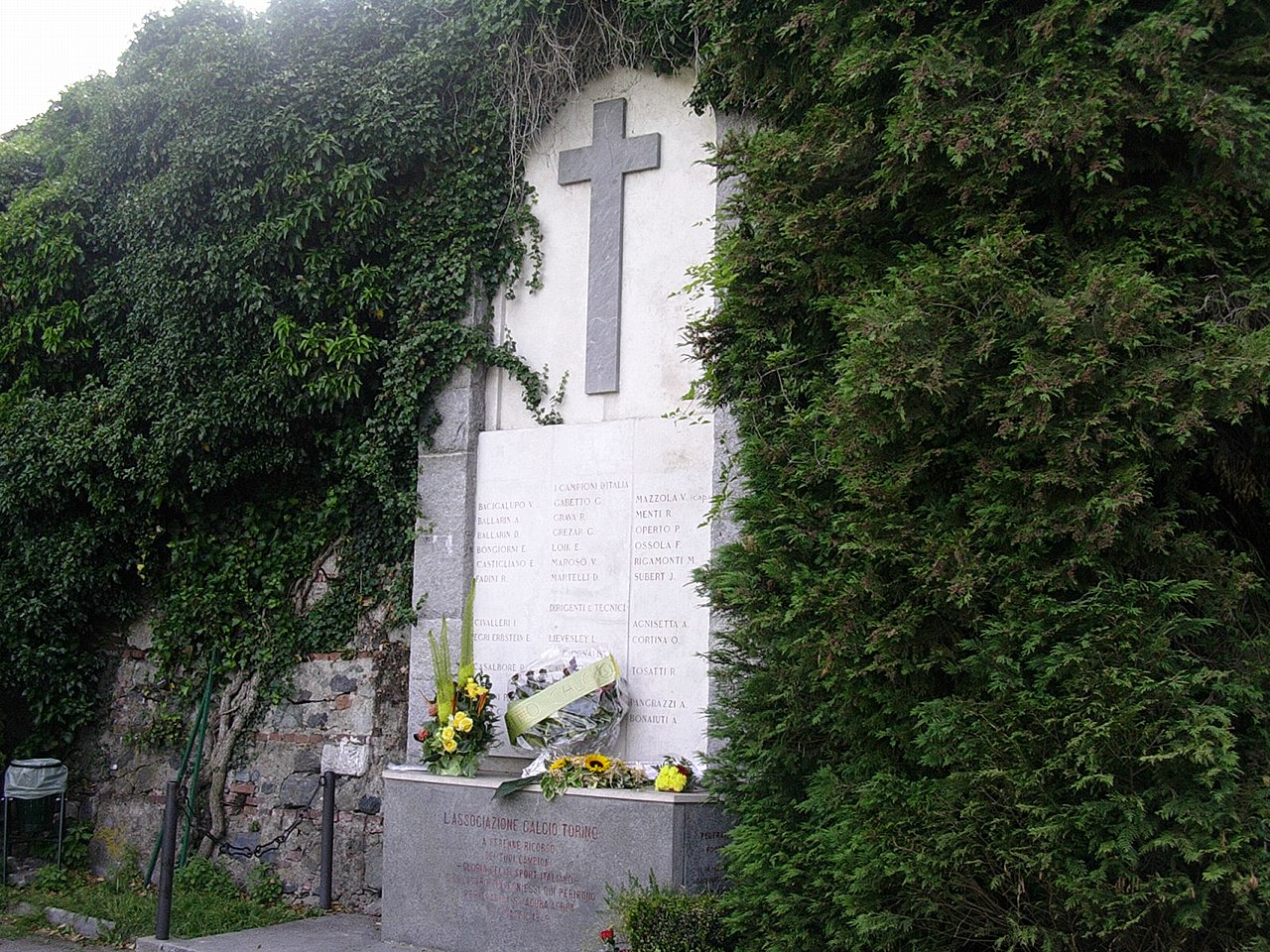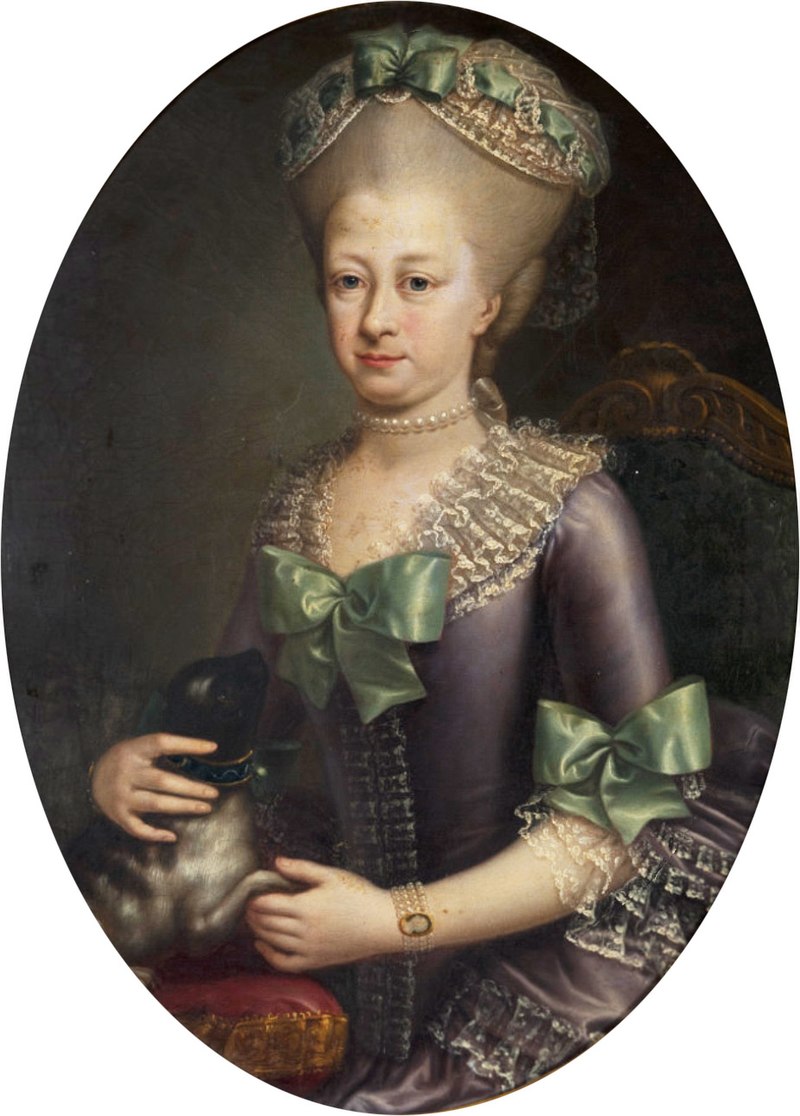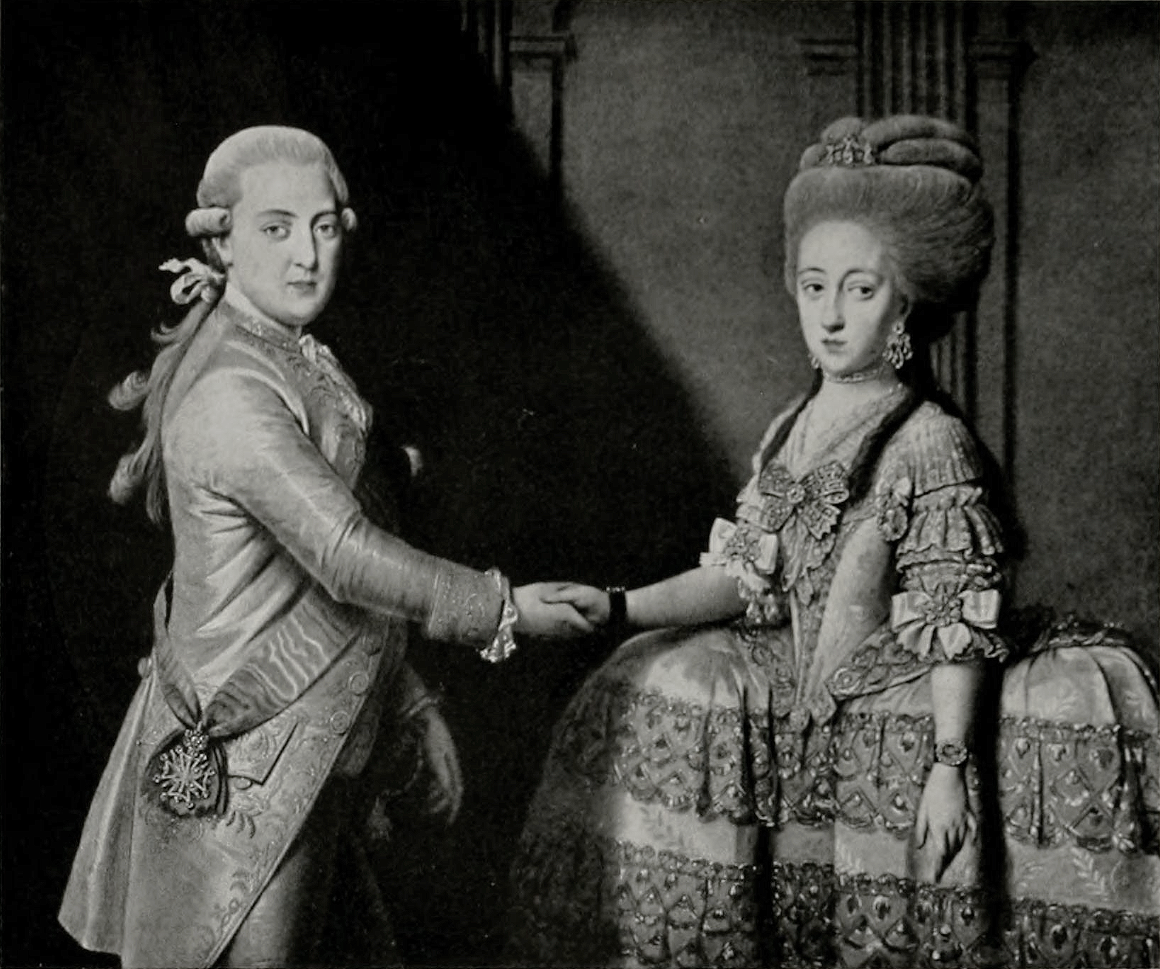by Susan Flantzer
© Unofficial Royalty 2023

Julie Clary; Credit – Wikipedia
Marie Julie Clary was the wife of Napoleon Bonaparte’s brother Joseph Bonaparte who was King of Naples from 1806 – 1808, and King of Spain from 1808 – 1813. Born on December 26, 1771, in the family mansion at 70 Roma Street in Marseille, France, Julie was the seventh of the nine children and the fifth of the six daughters of François Clary, a wealthy French merchant, and his second wife Françoise Rose Somis.
Julie had eight siblings:
- Joseph Nicolas Clary, 1st Comte Clary et de l’Empire (1760 – 1823), married Anne Jeanne Rouyer, had three children
- Joseph Honoré Clary (1762 – 1764), died in early childhood
- Marie Anne Rose Clary (1764 – 1835), married Antoine-Ignace Anthoine, Baron de Saint-Joseph et de l’Empire, Mayor of Marseille, had three children
- Marseille Clary (1764 – 1784), unmarried
- Justinien François Clary (1766 – 1794), unmarried
- Catherine Honorine Clary (1769 – 1843), married Henri Joseph Gabriel Blait de Villeneufve, had one daughter
- Basile Clary (1774 – 1781), died in childhood
- Bernardine Eugénie Désirée Clary, Queen Desideria of Sweden and Norway (1777 – 1860), married Jean-Baptiste Bernadotte, later King Carl XIV Johan of Sweden and Norway, had one son King Oscar I of Sweden and Norway, the royal families of Belgium, Denmark, Luxembourg, Norway, and Sweden descend from this marriage
Julie had four half-siblings from her father’s first marriage to Gabrielle Fléchon (1732 – 1758):
- François-Joseph Clary (1752 – 1753), died in infancy
- Marie-Jeanne Clary (1754 – 1815), married (1) Louis Honoré Lejeans (2) Emmanuel Mathieu Pézenas, Baron de Pluvinal
- Marie Thérèse Catherine Clary (1755 – 1818), married Lazare Lejeans
- Étienne François Clary (1757 – 1823), married Marcelle Guey, had two children

Julie and her sister Désirée by Robert Lefèvre, 1810; Credit – Wikipedia
Starting in 1789, the French Revolution brought major changes to France, and the Clary family went through periods of great insecurity. Julie and her sister Désirée had ties to the Bonaparte brothers before their ascent to power. Joseph Bonaparte, the eldest of the five Bonaparte brothers, had studied law at the University of Pisa and worked as a lawyer. The French First Republic was declared in September 1792, and Joseph was elected chairman of his local district council. The second eldest brother Napoleon joined the French army and quickly advanced.

Julie’s husband Joseph Bonaparte; Credit – Wikipedia
Julie’s younger sister Désirée met Joseph Bonaparte first, and the two became engaged. Soon after, Napoleon suggested that Joseph should instead marry Désirée’s sister Julie and that he would marry Désirée. Julie and Joseph Bonaparte were married on August 1, 1794. Napoleon and Désirée became engaged in April 1795, but Napoleon soon became involved with Joséphine de Beauharnais and the engagement ended in September 1795. Napoleon and Joséphine de Beauharnais were married in March 1796. Désirée Clary married Jean Baptiste Bernadotte, a noted French general and a Marshal of France. In 1810, Désirée’s husband was elected Crown Prince of Sweden because King Carl XIII of Sweden had no heirs. Jean Baptiste Bernadotte became Crown Prince of Sweden and in 1818, became King Carl XIV Johan of Sweden. Their descendants have reigned in Sweden ever since as the House of Bernadotte.
Julie’s family was very wealthy and her marriage to Joseph Bonaparte helped established the Bonaparte fortune and made her a favorite with her mother-in-law Letizia Bonaparte. During the latter part of the French Revolution, Napoleon rose to prominence and in 1799, at the age of 30 was the First Consul of France. Eventually, Napoleon was created First Consul for life. Joseph’s fortunes rose along with his brother’s.

Julie with her daughters Zénaïde and Charlotte by Jean-Baptiste Wicar, 1809; Credit – Wikipedia
Julie and Joseph had three daughters:
- Julie Joséphine Bonaparte (1796 – 1797), died in infancy
- Zénaïde Laetitia Julie Bonaparte (1801 – 1854), married her first cousin Charles Lucien Bonaparte, had twelve children
- Charlotte Napoléone Bonaparte (1802 – 1839), married her first cousin Napoleon Louis Bonaparte, no children, died giving birth to a stillborn child
In 1804, Joseph’s brother Napoleon declared himself Emperor of the French, and Joseph, along with his siblings became Imperial Princes and Princesses. Napoleon sent Joseph to Naples in 1806 to expel the Bourbons ruling there because they had sided against him in the War of the Third Coalition. After a successful French invasion, Napoleon proclaimed Joseph as King of Naples. Julie, now Queen of Naples, remained in Paris, at the court of her brother-in-law Napoleon I, Emperor of the French. While Joseph was King of Naples, he had a son and a daughter from his affair with Maria Giulia Colonna, daughter of Andrea Colonna, 3rd Prince of Stigliano and wife of Giangirolamo Acquaviva d’Aragona, 11th Duke of Nardò. In 1808 Julie was sent to Naples to help Joseph calm riots and revolts and to help keep the Kingdom of Naples stable. However, Napoleon became increasingly dissatisfied with his brother, and later in 1808, Joseph was replaced as King of Naples by Joachim Murat, the husband of Caroline Bonaparte, the sister of Joseph and Napoleon.
Meanwhile in Spain, after riots and a revolt, King Carlos IV of Spain was forced to abdicate in favor of his son King Fernando VII on March 19, 1808. Napoleon saw the weaknesses in the Spanish monarchy and decided to make a move. Carlos IV and his son Fernando VII were summoned to a meeting with Napoleon on May 7, 1808, at the Castle of Marracq in Bayonne, France, where Napoleon forced them both to abdicate their rights to the Spanish throne, declared the Bourbon dynasty of Spain deposed, and installed his brother Joseph as King of Spain.
Joseph and Julie, circa 1811
Julie never lived in or even traveled to Spain, preferring to live in Paris or Mortefontaine Castle (link in French) in France. In Spain, she was referred to as Reina Ausent, The Absent Queen, but Julie was given all the honors of a Queen of Spain at Napoleon’s court. Through her correspondence with Joseph, Julie informed him of Napoleon’s plans for Spain. She warned Joseph that Napoleon would never allow Spain to be too independent and that he should do everything possible to control Spain, especially its finances and army.
Immediately after Joseph was proclaimed King of Spain, uprisings broke out and resistance against him spread, leading to a guerrilla war that overshadowed Joseph’s entire reign. The resistance against Joseph made it nearly impossible for him to reign. In addition, Portugal and the United Kingdom came to the aid of the Spanish guerrilla forces in the Peninsular War. Due to the defeats in the Peninsular War, Napoleon was forced to reinstate Ferdinand VII as King of Spain and to make peace via the 1813 Treaty of Valençay.
Napoleon’s quest for power led to wars throughout a large part of Europe. In 1814, Paris was captured by the coalition fighting against Napoleon and his marshals decided to mutiny. Napoleon had no choice but to abdicate. The 1814 Treaty of Fontainebleau exiled Napoleon to the Mediterranean island of Elba, 12 miles/20 km off the coast of Tuscany, Italy.
After the first fall of Napoleon in 1814, Joseph and his daughters went into exile at Prangins Castle in Switzerland, which Julie had purchased. Julie remained in Paris because of the illness of her mother, who died in 1815. While in Paris, Julie was arrested because of her relationship to the exiled Napoleon and was brought before King Louis XVIII of France, the new king installed during the Bourbon Restoration, and Alexander I, Emperor of All Russia. Only through the intervention of her brother-in-law Jean Baptiste Bernadotte, then Crown Prince Carl Johan of Sweden, was Julie freed.
Napoleon escaped from the island of Elba on February 26, 1815, and arrived in France two days later. He attempted to regain power during the Reign of the Hundred Days but was ultimately defeated at the Battle of Waterloo on June 18, 1815. Napoleon was exiled to the island of Saint Helena, a British possession, in the Atlantic Ocean, 1162 miles/1,870 km from the west coast of Africa, where he died in 1821. After Napoleon’s final defeat at the Battle of Waterloo, Joseph Bonaparte emigrated to the United States, where he first lived in New York City and then in Philadelphia. He then purchased an estate, Point Breeze, in Bordentown, New Jersey, on the Delaware River. Joseph had two American daughters born at Point Breeze, by his mistress Annette Savage.

Julie in exile in Florence by Michel Ghislain Stapleaux, 1834; Credit – Wikipedia
Julie did not accompany her husband Joseph to the United States. Her sister Désirée, who was then Crown Princess of Sweden, wanted to bring Julie and her daughters to Sweden but Désirée’s husband Crown Prince Carl Johan thought it was politically unwise. Julie was a member of the Bonaparte family and her living in Sweden might be interpreted as a sign that Crown Prince Carl Johan had sided with the deposed Napoleon. Instead, Julie settled with her daughters in the Free City of Frankfurt (now in Germany), Brussels, Belgium, and then finally in Florence, Grand Duchy of Tuscany, now in Italy, at the Palazzo Serristori, near the residence of her brother-in-law Camillo Borghese, 6th Prince of Sulmona, the second husband of Joseph’s sister Pauline.

Joseph Bonaparte in 1832, the year he returned to Europe; Credit – Wikipedia
Julie’s husband Joseph stayed in the United States for seventeen years before returning to Europe in 1832, where he lived in London, England. He occasionally returned to his estate in the United States. In 1840, Joseph joined Julie in Florence. Julie accepted him back despite his adultery. On July 28, 1844, Joseph died in Florence, Grand Duchy of Tuscany, now in Italy, at the age of seventy-six. Julie survived him by eight months dying in Florence on April 7, 1845, aged seventy-three. They were buried next to each other at the Basilica of Santa Croce in Florence, Italy.

Tomb of Julie Clary Bonaparte; Credit – By Dennis Jarvis from Halifax, Canada – Italy-1089 – Marie Julie Bonaparte, CC BY-SA 2.0, https://commons.wikimedia.org/w/index.php?curid=64847474
In 1864, Joseph’s remains were brought back to France by his nephew Napoleon III, Emperor of the French, and interred in Les Invalides in Paris, France where his brother Napoleon I was interred. The remains of Julie are still at the Basilica of Santa Croce in Florence, Italy beside the remains of her daughter Charlotte, who died in 1839, aged 36, giving birth to a stillborn child.

Tomb of Joseph Bonaparte; Credit – By Jean-Pol GRANDMONT – Own work, CC BY 4.0, https://commons.wikimedia.org/w/index.php?curid=91124533
This article is the intellectual property of Unofficial Royalty and is NOT TO BE COPIED, EDITED, OR POSTED IN ANY FORM ON ANOTHER WEBSITE under any circumstances. It is permissible to use a link that directs to Unofficial Royalty.
Works Cited
- Flantzer, Susan. (2023) Joseph Bonaparte, King of Spain, King of Naples, Unofficial Royalty. Available at: https://www.unofficialroyalty.com/joseph-bonaparte-king-of-spain-king-of-naples (Accessed: February 1, 2023).
- François Clary (2022) geni_family_tree. Available at: https://www.geni.com/people/Fran%C3%A7ois-Clary/6000000003004013794 (Accessed: February 1, 2023).
- François Clary (2023) Wikipedia. Wikimedia Foundation. Available at: https://en.wikipedia.org/wiki/Fran%C3%A7ois_Clary (Accessed: February 1, 2023).
- Julie Clary (2023) Wikipedia. Wikimedia Foundation. Available at: https://en.wikipedia.org/wiki/Julie_Clary (Accessed: February 1, 2023).
- Julie Clary (2022) Wikipedia (Italian). Wikimedia Foundation. Available at: https://it.wikipedia.org/wiki/Julie_Clary (Accessed: February 1, 2023).
- Julia Clary (2023) Wikipedia (Spanish). Wikimedia Foundation. Available at: https://es.wikipedia.org/wiki/Julia_Clary (Accessed: February 1, 2023).
- Mehl, Scott. (2015) Désirée Clary, Queen Desideria of Sweden and Norway, Unofficial Royalty. Available at: https://www.unofficialroyalty.com/desiree-clary-queen-of-sweden/ (Accessed: February 1, 2023).






















